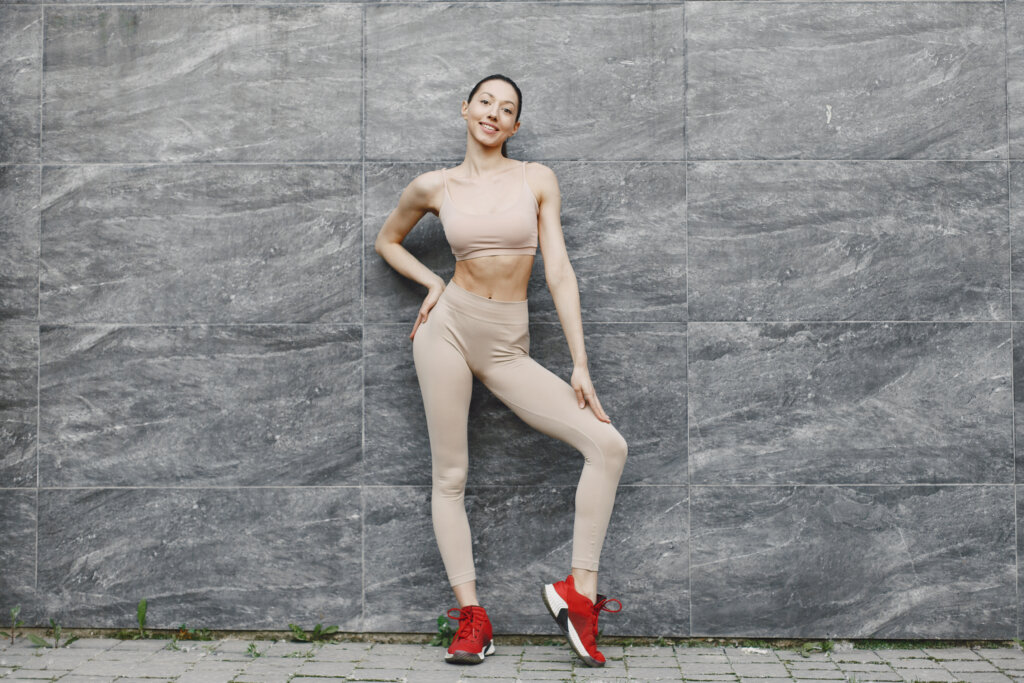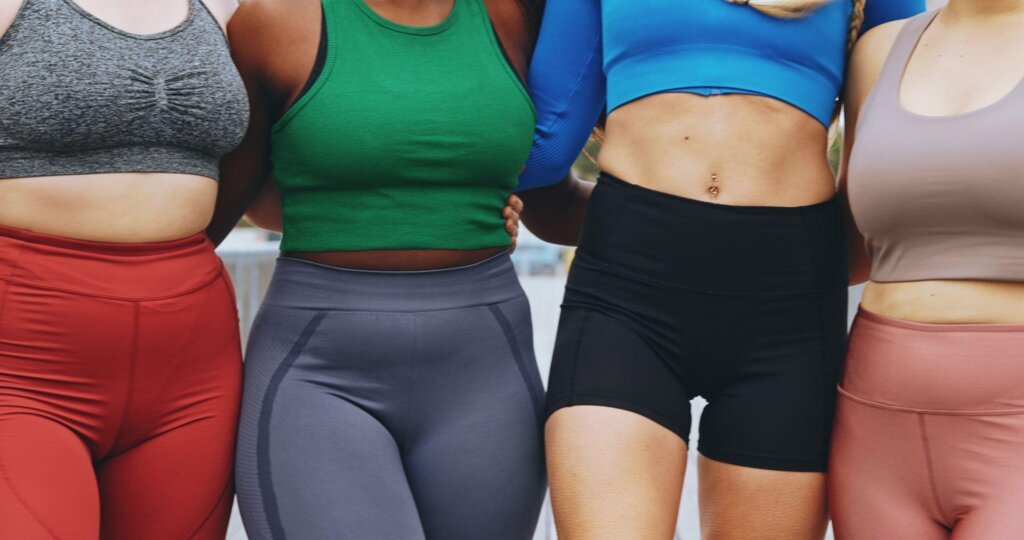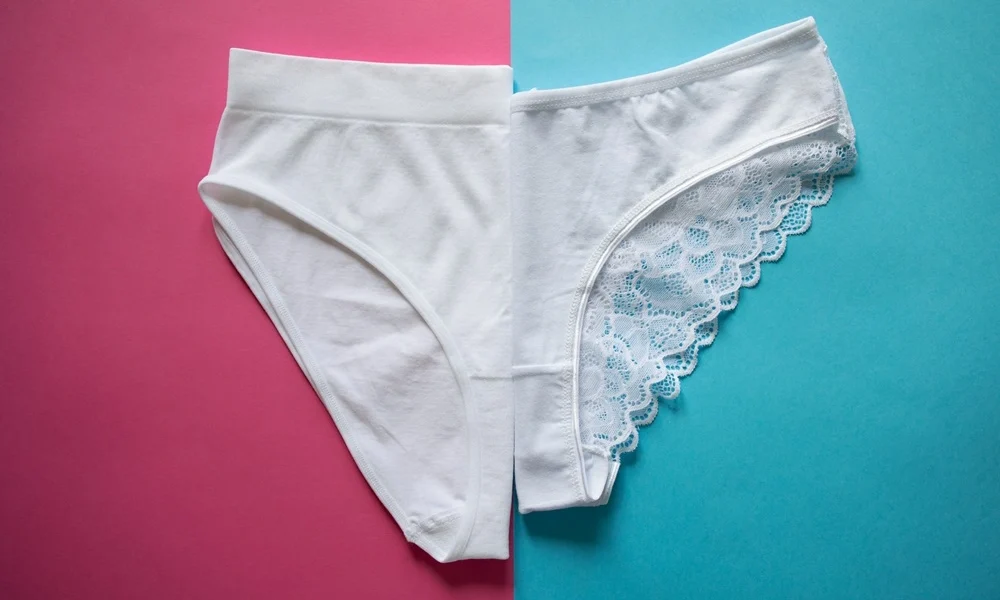Activewear material no longer has a specific place outside of the gym thanks to the rise of athleisure.
People are now seen wearing athletic items on the streets, including shoes, hoodies, different types of leggings, and tracksuits. For more formal occasions, they are even mixed in with dressier outfits.
When producing your sportswear or athletic brand, the significance of choosing the proper fabric cannot be stressed enough. We may have said it to you a hundred times, but we won’t stop.
Who wants to work out while dripping with sweat in a constricting outfit, feeling heated, uncomfortable, and clammy? This is why the fabric selection for activewear and sportswear is crucial.
What is The Best Material For Athletic Wear?
Activewear is best made from tough, breathable materials that are better at wicking away sweat, aiding leggings’ mobility, and offering superior protection.
Most significantly, flexibility is essential; otherwise, you won’t be able to wear your workout clothes properly. In this situation, selecting the ideal gym leggings is essential.
Cotton

Cotton was widely believed to be a material that doesn’t absorb sweat, making it unsuitable for athletic wear. But recently, cotton sportswear has come back into fashion since it manages odors better than other materials. It is permeable and doesn’t retain unpleasant odors or other activity.
But when compared to its more contemporary and technologically sophisticated rivals, cotton still falls short when it comes to quickly absorbing sweat.
Spandex

Sportswear frequently uses polyester, another popular material type. It is essentially a type of fabric consisting of plastic fibers that are breathable, light, and wrinkle-free. This cloth does not absorb perspiration since it is non-absorbent; rather, sweat is permitted to dry naturally on the outside of the fabric.
Polyester’s exceptional strength and durability are two of the main reasons it is a favored option for leading sportswear producers. High-strength polyester fibers are more durable than rivals and can sustain athletes’ forceful, repetitive actions while being reasonably inexpensive compared to similar materials.
In addition, polyester has outstanding insulating qualities, making it a fantastic material for areas with alternating hot and cold temperatures.
Synthetic

Sports enthusiasts who were tired of wearing rubber and plastic sportswear that made them overheat originally had synthetic sportswear in mind as an alternative.
Clothing and other sporting goods, such as knee and elbow bands, can be made out of synthetic materials. While exercising, you can stay cool by wearing this material because it is breathable and quickly absorbs sweat.
Synthetic athletic apparel’s main flaw is related to the manufacturing process. Chemical synthesis is used to generate it, which has an adverse environmental impact by producing non-renewable byproducts.
Bamboo Fiber

Bamboo is the best fabric for sportswear if you want extremely soft yet breathable sportswear. Natural, lightweight fabrics with anti-static properties are produced from bamboo pulp. Bamboo fiber also wicks away moisture, making it a completely odorless sporting material. Wearing it outside in the sun for an extended period won’t be an issue because it also offers incredible UV protection.
Generally speaking, bamboo fiber can be utilized in almost any situation where cotton is not available. Due to its significant qualities that help production and manufacturing processes, some clothing manufacturers may even prefer this type of fabric to cotton.
For instance, bamboo cloth is more stretchy than cotton and is very breathable. This fabric is simple to weave into other textiles with high thread counts, and the resulting clothing is frequently thinner than cotton-based clothing while still being equally or more malleable.
Microfiber

As the name suggests, microfiber is a material consisting of incredibly fine, small thread fibers with a maximum linear density of one denier. This indicates that the threads in microfiber are 100 times finer than those in human hair. It is made completely of synthetic materials, such as a polyester and polyamide blend.
Any products that are manufactured frequently cost more since the mixing technique employed by sportswear manufacturers is a costly material to use on a large scale.
Microfiber is commonly used to produce towels, tracksuits, and other sporting wear due to its superior absorption capacity and non-abrasive nature.
Nylon

Women’s stockings were notably produced using the first synthetic material to be commercially viable. But it’s currently commonly utilized in the production of sportswear, including tracksuits, gym wear, and wind runners.
Stretchable, quick-drying, and mildew-resistant are all qualities of nylon. Additionally, it is remarkably breathable.
What Are The Factors To Be Considered In Selecting Fabric For Sportswear?
When choosing custom sports apparel, the material should be one of the top factors to take into account because how something appears and feels can have a significant impact on its final result.
What is the best material for workout clothes? Therefore, do we seek high-performance sports apparel? Consider some of the most crucial elements:
Durability And Strength
Activewear’s shelf life can be extended by making it more durable. Activewear must be able to withstand any wear and tear or aging if high-quality, strong fibers are combined to create it.
Breathability
The primary consideration when choosing workout clothes materials is that they need to be breathable and have moisture-wicking qualities. Breathable materials make air escape simple, keeping the body cool and clean.
Comfort
Your performance may suffer if you wear inappropriate clothing. Imagine working out while donning a tight sports bra that keeps poking into your back. What about a pair of jeans that are either too tight or too loose? Possible symptoms include unease and trouble focusing. Choosing the right size and level of comfort is essential because, as should go without saying, you want to be comfortable while exercising.
Moisture
To encourage evaporation, the fabric should draw sweat molecules to the outside layer of the garment. It is a crucial requirement because working out will cause you to perspire profusely. You will therefore experience discomfort if your training attire lacks moisture-wicking capabilities.
Flexibility
Your movements should be unrestricted by the training attire, which should provide a wide range of mobility. Your range of motion is greatly increased if your training attire is constructed of high-quality materials. Yoga allows you to move or bend whatever you like.
Protection
Choose clothing or equipment that will keep you cool in the summer and warm in the winter if you plan to exercise outdoors. It should additionally shield you from the sun’s UV rays.
When selecting the best fabric for gym wear, you should consider as many different elements as you can. While not all activewear fabrics will excel in every trait stated above, you should still seek out as many traits as you can.
What Material Are Gym Clothes Made of?

Although different materials will promote a different focus for your training, the fabrics you choose for your gym attire should support these traits.
The most preferred material is polyester since it is lightweight, breathable, and quick to dry. But sometimes it can become tedious and motionless. Polyester and nylon both share some characteristics. It is both light and sturdy.
The best fabric for athletic wear will have a significant amount of spandex in it so that the form-fitting clothing will stick to your legs and offer support. The majority of tights also include either nylon or polyester fibers in a stretchy knitted construction because spandex on its own feels oppressive and lacks breathability.
Due to its propensity to absorb moisture, cotton is typically not a good material choice for tight-fitting clothing like cycling apparel. Instead, try nylon or polyester for sportswear.
Final Words
When deciding which are the best activewear fabrics suitable for sportswear, keep the demands of the buyer in mind first. Specific types of clothing are needed for various sporting events. For instance, loose and comfy clothing is needed for sports like football and basketball.
However, wearing loose clothing when bicycling or running can put you at risk since your pants may get tangled up in the bike’s pedals. Skiing, for example, requires clothing that effectively insulates the body from the elements.




